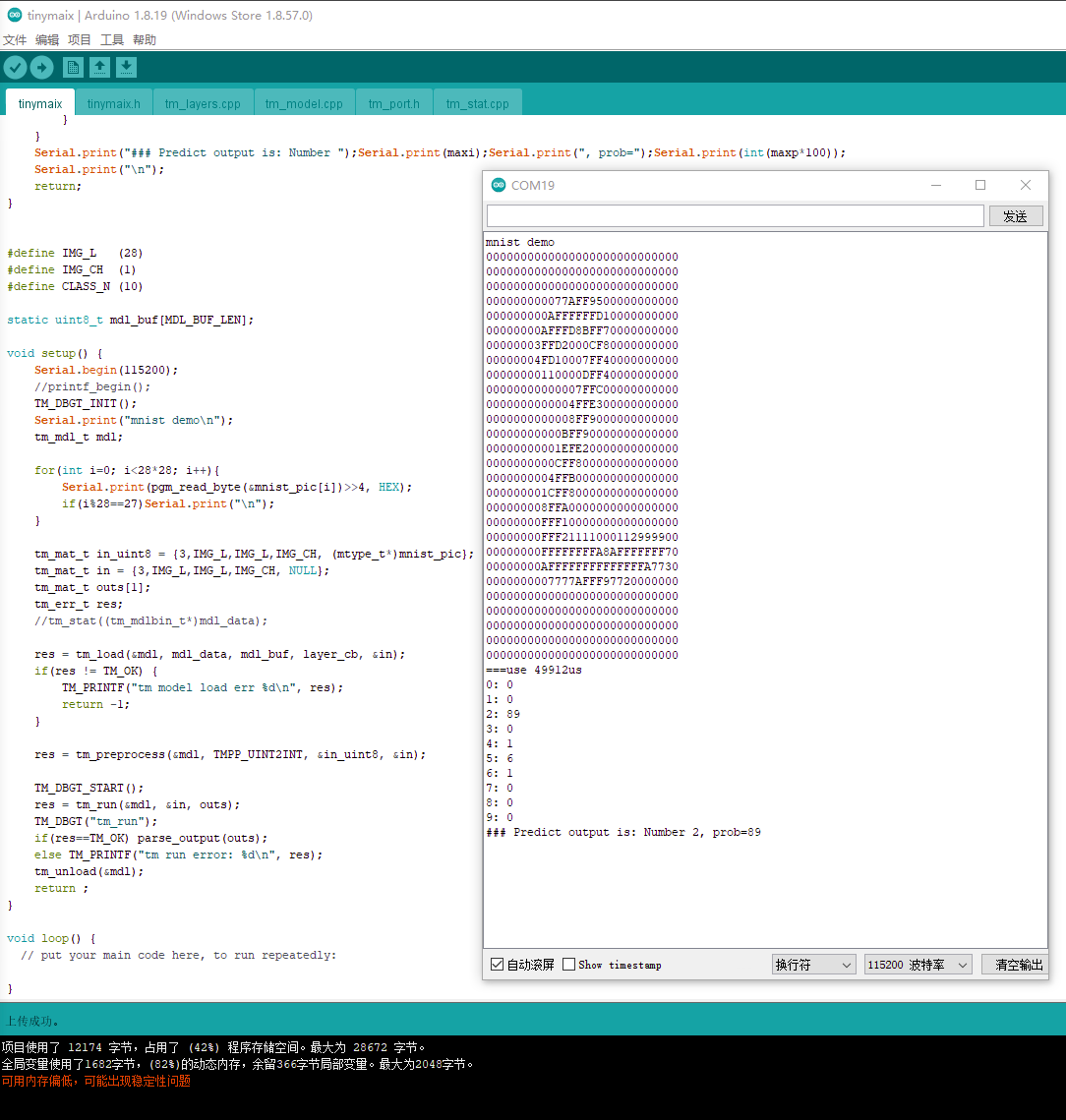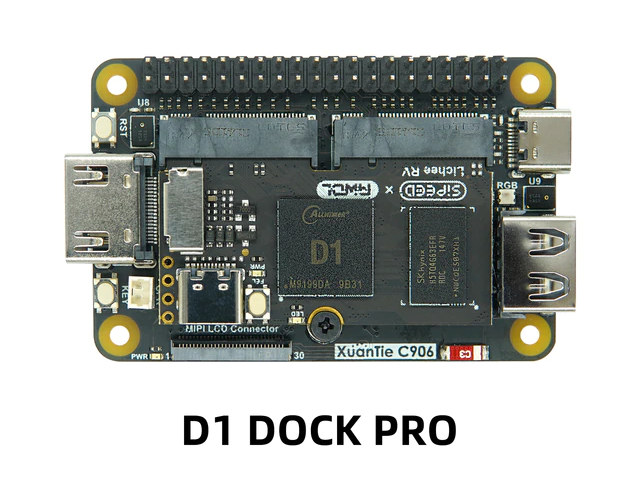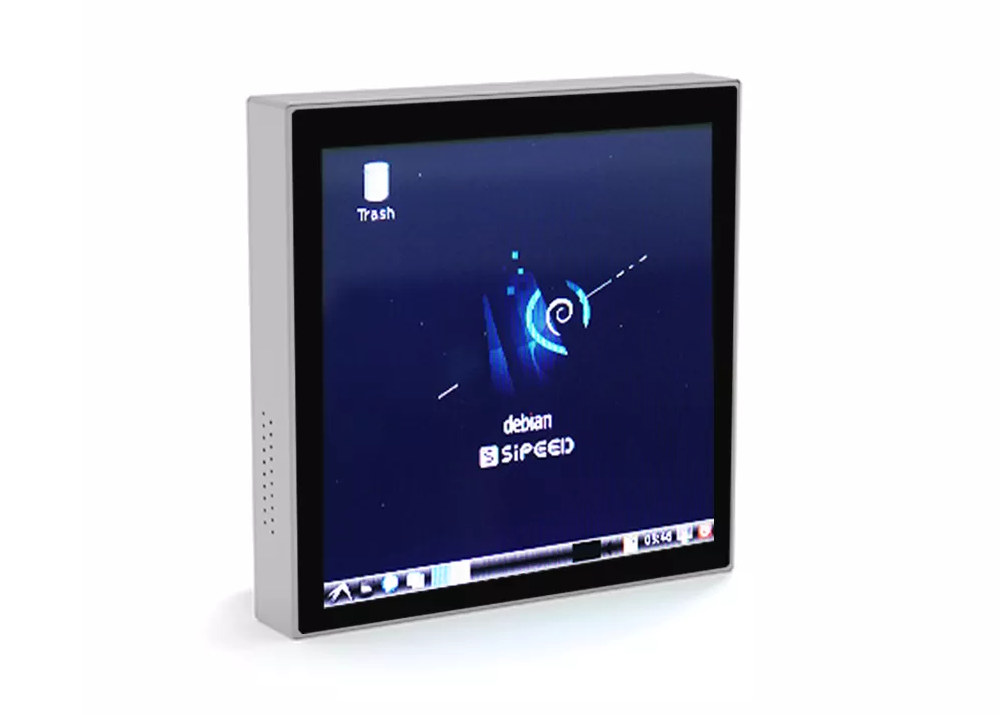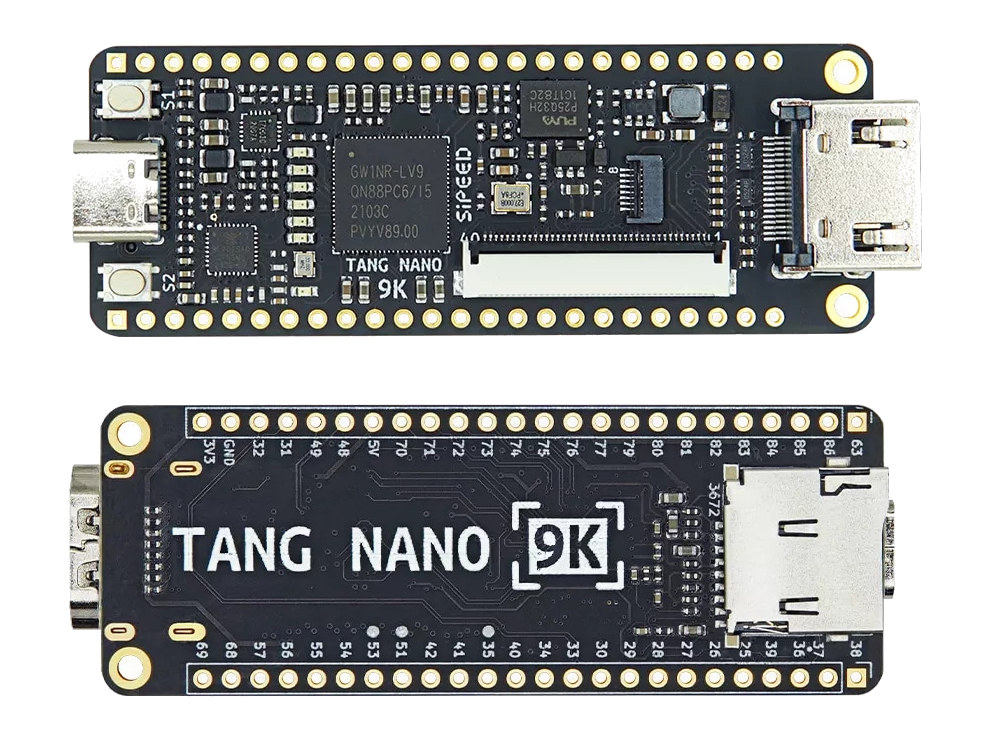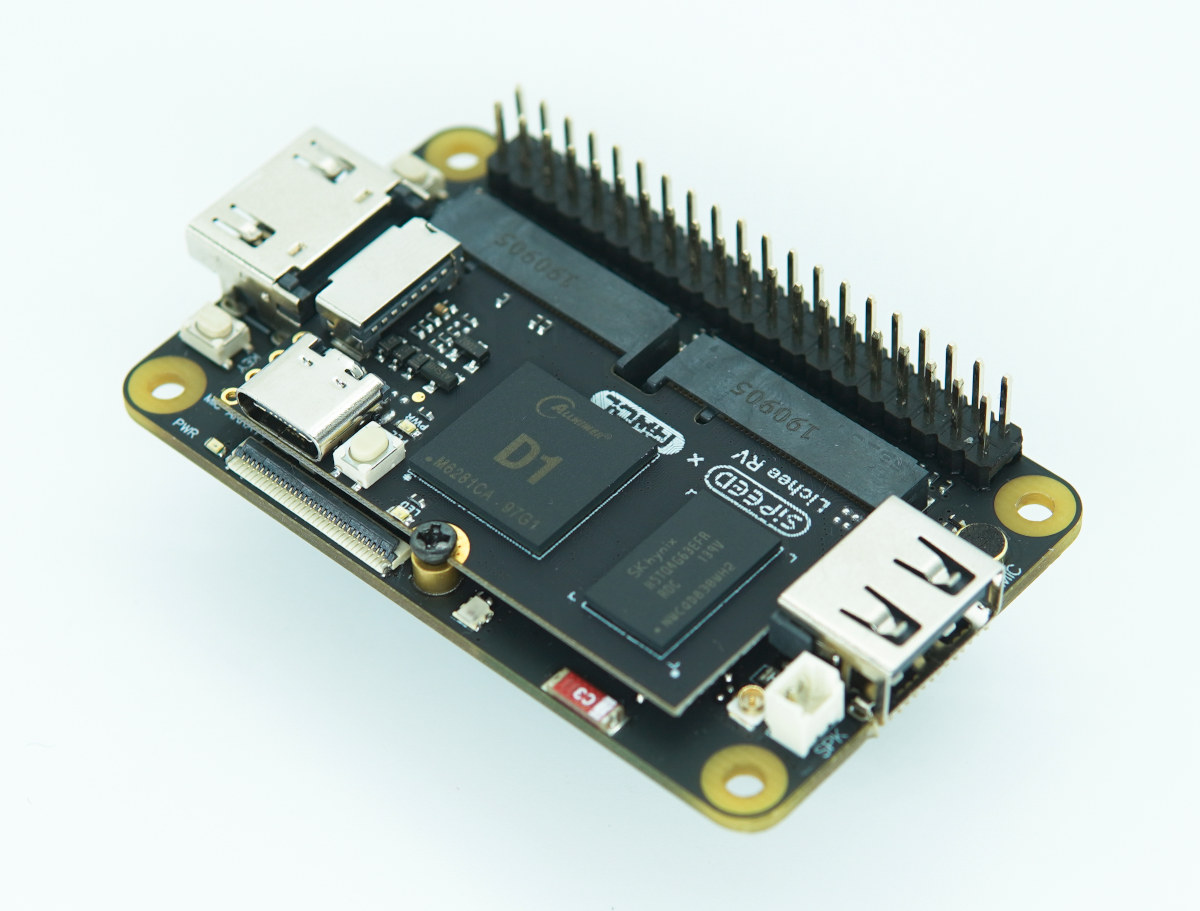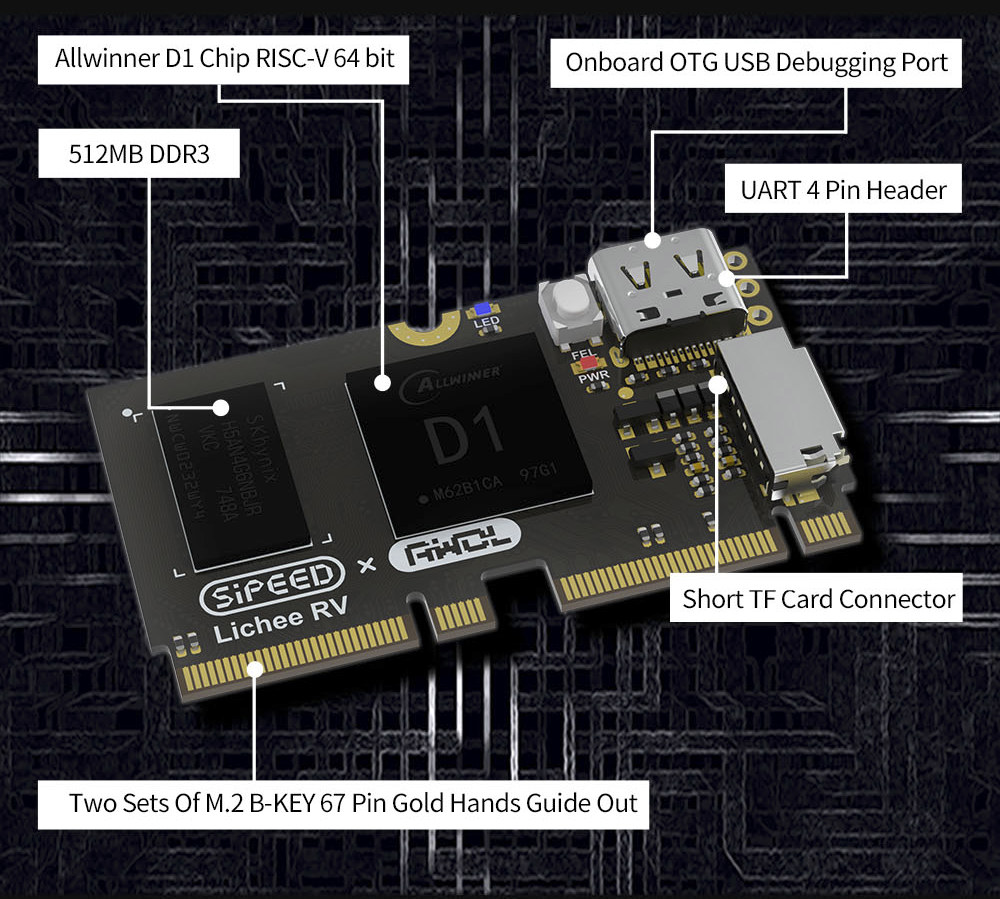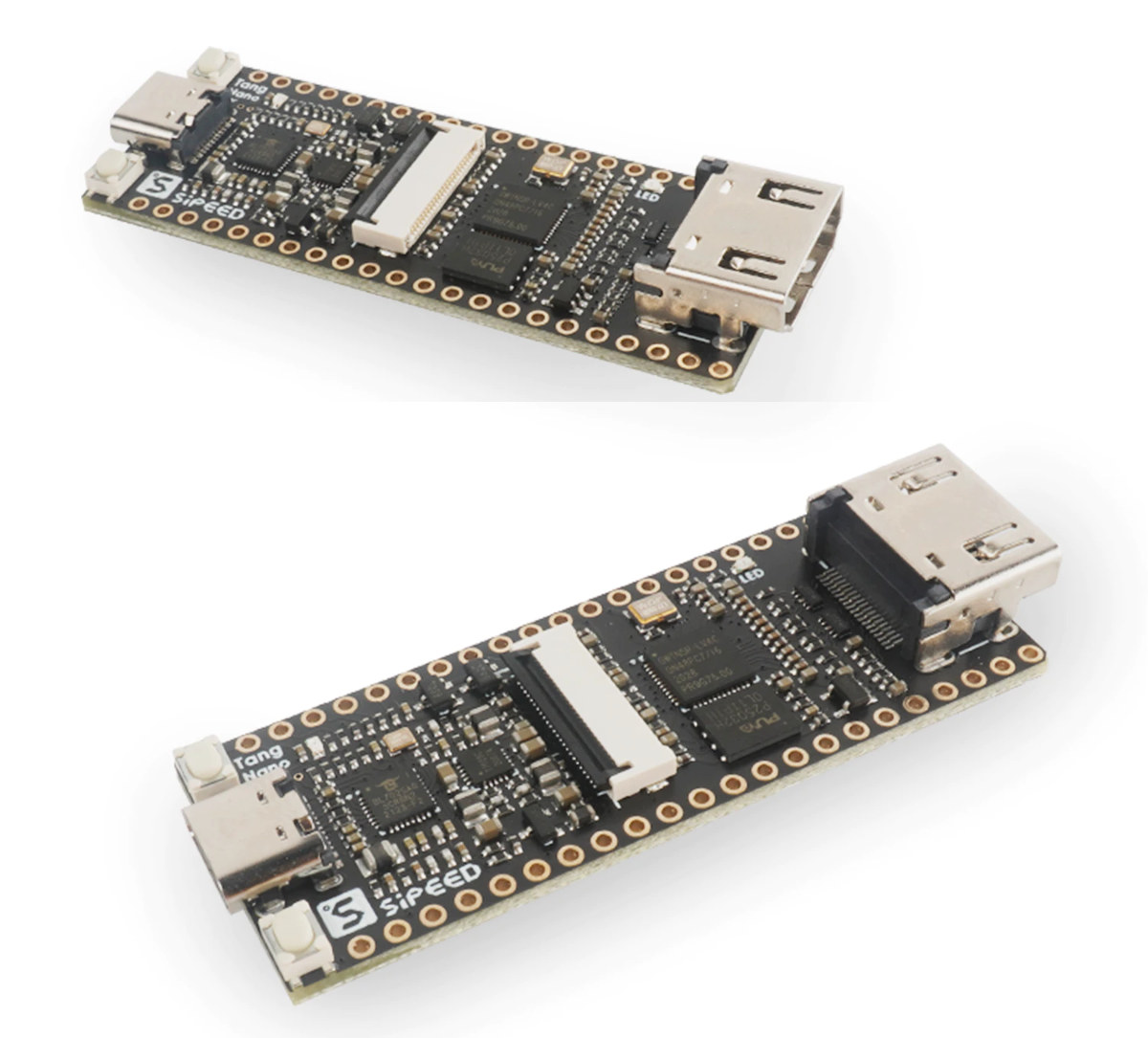Sipeed TinyMaix open-source machine learning library is designed for microcontrollers, and lightweight enough to run on a Microchip ATmega328 MCU found in the Arduino UNO board and its many clones. Developed during a weekend hackathon, the core code of TinyMax is about 400 lines long, with a binary size of about 3KB, and low RAM usage, enabling it to run the MNIST handwritten digit classification on an ATmega320 MCU with just 2KB SRAM and 32KB flash. TinyMax highlights Small footprint Core code is less than 400 lines (tm_layers.c+tm_model.c+arch_O0.h), code .text section less than 3KB Low RAM consumption, with the MNIST classification running on less than 1KB RAM Support INT8/FP32 model, convert from keras h5 or tflite. Support multi-architecture acceleration: ARM SIMD/NEON, MVEI, RV32P, RV64V (32-bit & 64-bit RISC-V vector extensions) User-friendly interfaces, just load/run models Supports full static memory config MaixHub Online Model Training support coming soon Sipeed says there […]
Sipeed Lichee RV Dock Pro RISC-V SBC adds MIPI/RGB LCD connector, dual MIC, and BL702 JTAG+UART debugger
Sipeed has launched the Lichee RV Dock Pro kit for the company’s Lichee RV Allwinner D1 RISC-V module that builds on the earlier Lichee RV Dock carrier board and adds a MIPI/RGB LCD connector, two built-in microphones, as well as an on-board JTAG+UART debugger based on Bouffalo Lab BL702 microcontroller. Lichee RV Dock Pro specifications (preliminary) which changes in bold or strikethrough: Supported system-on-module (SoM) – Lichee RV module with Allwinner D1 RISC-V processor @ 1 GHz, 512MB DDR3, MicroSD card slot, and USB Type-C OTG port Storage – Optional SPI flash Display interfaces HDMI port up to 4Kp30 MIPI LCD/RGB interface for up to 720p30 display Audio – 3W power amplifier, 2x analog microphone, support for 6-mic array via expansion Connectivity – WiFi 4 and Bluetooth 4.2 via Realtek RTL8723 wireless module with ceramic antenna, IPEX antenna connector USB – 1x USB Type-A port adding to the USB-C OTG […]
Lichee RV-86 RISC-V Linux 4-inch panel targets home automation, HMI applications
When Sipeed first introduced the Lichee RV module with Allwinner D1 RISC-V SoC last November, they also teased the Lichee RV-86, an “86 Box” with a 4-inch 480×480 touchscreen display, an XR829 WiFi and Bluetooth module, Ethernet (via USB), two microphones, a GPIO header, and support for WAFT (WebAssembly Framework for Things). I’ve just noticed the Lichee RV-86 has been for sale for several months, so it may be interesting to have a closer look, and now there’s also an option to get a 720×720 touchscreen display. Lichee RV-86 specifications: SoM – Sipeed Lichee RV Nezha compute module with Allwinner D1 RISC-V processor @ 1 GHz, 512MB or 1GB DDR3, microSD card slot, and USB Type-C OTG port Display 4-inch 480×480 IPS capacitive touch screen OR 4-inch 720×720 IPS capacitive touch screen It is also possible to connect an 8-inch 1280*800 IPS capacitive touch screen to the board Audio – […]
Tang Nano 9K FPGA board can emulate PicoRV32 RISC-V soft-core with all peripherals
Tang Nano 9K FPGA is the third board from Sipeed based on GOWIN FPGA following the original Tang Nano board with 1K LUT and Tang Nano 4K launched last year with GW1NSR-LV4C (aka GW1NSR-4C) FPGA offering 4068 logical units and 64 Mbit PSRAM, plus an Arm Cortex-M3 hard processor. As its name implies, the new board comes with 9K LUTs, as well as 64 Mbit PSRAM, 32 Mbit Flash, a micro SD card, and video I/O (HDMI, RGB LCD connector) that makes it suitable to run Verilog HDL code emulating a PicoRV32 RISC-V soft-core with all peripherals. Tang Nano 9K FPGA board specifications: FPGA – GOWIN LittleBee GW1NR-9/GW1NR-LV9 8,640 logical units (LUTs) 6,480 flip-flop 17,280 bits shadow SRAM (SSRAM) 486 Kbit block SRAM (BSRAM) 64 Mbit PSRAM 608 Kbit user flash 2x PLL Up to 276x user I/O Storage – 32 Mbit SPI flash. MicroSD card socket Display I/F HDMI […]
Sipeed Lichee RV RISC-V module gets $5+ carrier board with HDMI and USB ports, optional WiFi
Sipeed introduced the Lichee RV Allwinner D1 Linux RISC-V board going for just $17 with 512MB RAM last month. While with a USB-C port it could be used as a standalone part, its dual M.2 connector makes it more like a module and we noted a tiny carrier board was in the works at the time. The baseboard is now available and known as the Lichee RV Dock adding HDMI and USB ports, as well as a 40-pin GPIO header for just $5, or $8 if you’d like to get Wi-Fi 4 and Bluetooth 4.2 connectivity through a Realtek RTL8723DS module. Sipeed Lichee RV Dock specifications: Supported system-on-module (SoM) – Lichee RV module with Allwinner D1 RISC-V processor @ 1 GHz, 512MB DDR3, MicroSD card slot, and USB Type-C OTG port Storage – Optional SPI flash Display interfaces HDMI port up to 4Kp30 Optional RGB interface for up to 720p30 […]
Sipeed LicheeRV – A $16.90 Allwinner D1 Linux RISC-V board
Finally! There’s now a much more affordable Allwinner D1 RISC-V Linux board thanks to Sipeed LicheeRV Nezha CM SBC sold for $16.90 and up on Aliexpress, that’s much cheaper than the $100 asked for Nezha SBC, although still not incredibly cheap as we’ll see from the specifications below. Sipeed LicheeRV is actually both a board and a system-on-on-module with an edge connector, and is equipped with 512MB DDR3, a USB-C OTG port, a MicroSD card socket, and an SPI display interface. The dual M.2 edge connector can be plugged into a carrier board, and they will be a “86 Box” (86x86mm) for HMI display that can be used for home automation. Sipeed Lichee RV specifications: SoC – Allwinner D1 single-core XuanTie C906 64-bit RISC-V processor @ 1.0 GHz with HiFi4 DSP, G2D 2D graphics accelerators Memory – 512MB DDR3 memory @ 792 MHz Storage – MicroSD card slot Video – […]
$18 Tang Nano 4K FPGA board comes with HDMI output, optional camera
Sipeed’s Tang Nano 4K FPGA board is an upgrade to the company’s Tang Nano FPGA board with a more powerful GOWIN GW1NSR-LV4C FPGA with 4608 LUT (instead of 1152) and a Cortex-M3 microcontroller embedded into the chip. Like the previous board, the new Tang Nano 4K features a USB-C port for power and downloading the bitstream, but replace the RGB LCD interface with an HDMI port, and adds support for an optional OV2640 camera. Tang Nano 4K board specifications: FPGA – GOWIN GW1NSR-LV4C aka GW1NSR-4C (See PDF datasheet for details) with 4608 logical units (LUTs) 3456 registers 16 multiplier parameters 180Kbit block SRAM, 64Mbit PSRAM 2x PLL Up to 44x user I/O Arm Cortex-M3 hard processor Storage – 32 Mbit NOR flash Video Output – HDMI port Camera I/F – DVP camera connector for OV2640 camera sensor up to 1600 x 1200 (UXGA) resolution USB – USB Type-C port for […]
MAIX-II A AI camera board combines Allwinner R329 smart audio processor with USB-C camera
Earlier this year, we wrote about Sipeed MAIX-II Dock AIoT vision devkit with an Allwinner V831 camera processor with a small 200 MOPS NPU, an Omnivision SP2305 2MP camera sensor, and a 1.3-inch display. But for some reason, which could be supply issues, Sipeed has designed a much different variant called MAIX-II A with a board based on Allwinner R329 smart audio processor, a 720p30 USB camera module, and a 1.5-inch display. MAIX-II A board specifications: Main M.2 module – Maix-II A module with Allwinner R329 dual-core Cortex-A53 processor @ 1.5 GHz, 256MB DDR3 on-chip, a dual-core HIFI4 DSP @ 400 MHz, and Arm China AIPU AI accelerator for up to 256 MOPS, plus Wi-Fi & BLE and a footprint for an SPI Flash. Storage – MicroSD card socket Display – 1.5-inch LCD display with 240×240 resolution Audio – Dual microphones, 3W speakers Camera – 720p USB-C camera module based […]


